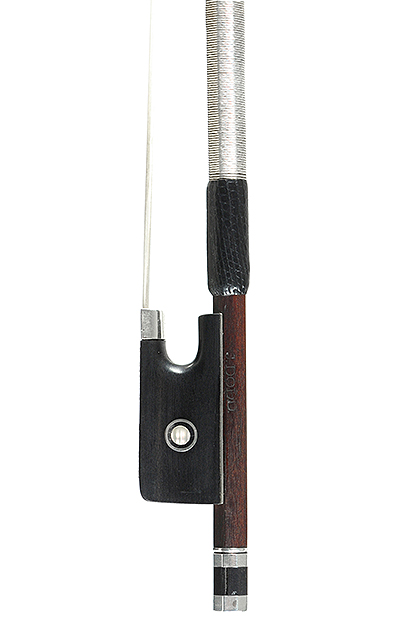John Dodd, the legendary father of English violin bow making, lived and worked in dire poverty. Notes on his life and art.
Envision a thickset figure with a slight waddle to his walk, meandering through the streets of London between cheap pubs and his shabby studio where the boards of old barrels lay stacked in heaps. Clad in a threadbare coat, the suspicious and quite eccentric craftsman carried oyster shells which could be heard clicking in his pockets; he was forced to beg for these shells so he could scrape out mother-of-pearl for his bows. The likes of such bows had never been seen before in England, and any profit made from selling them was already long since spent before the objects themselves could leave his atelier and venture forth and testify to their craftsman's greatness. This greatness was that of a small man, a man who could barely write much more than his own name; in his lifetime, he was not to find a proper livelihood.
John Dodd – Life and work: Overview
John Dodd, English bow maker, is certainly one of the most moving figures amongst the early masters of modern bow making, many of whom also came from humble origins. Born in 1752 in Stirling, Scotland, John Dodd, the son of bow maker Edward Dodd (1705-1810) started out as a gunsmith and maker of money scales; these trades both required outstanding precision craftsmanship that would later become evident in his top-quality bow mountings. His professional path thus ran in a certain kind of curious parallel to his great French contemporary François Xavier Tourte (1747/48-1835), who is considered the inventor of the modern violin bow and originally trained as a watchmaker.
 John Dodd and Francois Xavier Tourte
John Dodd and Francois Xavier Tourte
One of the remarkable twists of history is the fact that Tourte and Dodd both emerged as the greatest names in their fields at the same point in time: both produced comparably epoch-defining pieces, and yet they knew little about each other. With their complex geometry and masterful balance, John Dodd's violin bows are almost equal in excellence to those of Tourte. If they can be said to have any shortcoming at all, it would be the fact that some sticks are comparatively short, which can pose certain impediments to soloist performance.
John Dodd: bow making in challenging circumstances
In many cases, the fact that John Dodd used shorter sticks may be attributed to the challenging circumstances under which he had to procure his materials. Nail holes in the (top-quality) pernambuco of some bows reveal the fact that the wood was repurposed from the boards of old barrels. It must be said in general that John Dodd showed an amazing ability to improvise, allowing him to craft sophisticated violin bows despite the most modest of circumstances. On more than one occasion he was said to have acquired the silver for the mountings used in especially fine pieces by taking cutlery from a housekeeper. He worked with odd tools he produced himself so he could carve in the unconventional technique he developed, an approach which in turn was the basis for the great stability of his bow sticks.
John Dodd and the need
Given his daily encounters with need, John Dodd seems to have seen his skills and knowledge as the capital that could not be taken from him as long as he protected it vigilantly enough. Not even the sum of 1000 pounds sterling tempted him to disclose the secret of how he carved wood for a new stick, and no apprentice was ever initiated into the enigma of his art. On 4 October 1839 John Dodd died at an advanced age in the poorhouse of Richmond, utterly destitute and ill. His legacy is his masterful bows, which are true milestones in the history of instruments. He was one of the first to mark his work with a stamp, and “Dodd” and “J. Dodd” quickly became a sought-after brand which countless ateliers and companies were eager to claim as their own. They attempted to honour the first great master of English bow making, a man who never intended to establish a tradition.
Related articles:
James Tubbs: the classic name in English bow making
Eugène Sartory: the modern classic of bow making
W.E. Hill & Sons: on the Mt. Parnassus of the art of violin making
Beares, J & A Beare and Beares: expertise in changing times




